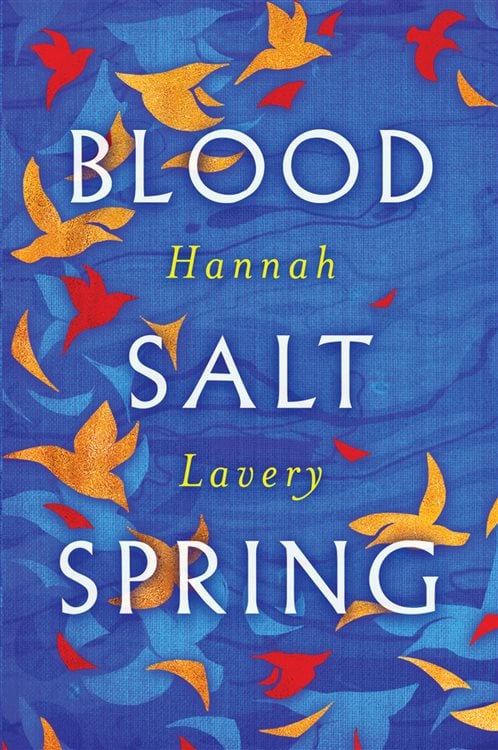Blood Salt Spring
Hannah Lavery
(Polygon, Birlinn, 2022); pbk. £10.99
As the title suggests, Hannah Lavery’s collection is a triptych possessing multiplicities. The reader is brought along through scenes and sights that could be from the author themselves, or could be anyone, yet which all share in the difficulties, tragedies, and memories that are embroiled in race, class, sexuality in a tapestry creating division but also cohesion through the collection’s central storyline. Time and place are similarly blended, both grounded and also ephemeral, ranging from the real, distinctive moments to a sense that they could apply to the present or past, to people across oceans, or to those who live next door.
Leave if you’re the lightest.
Leave if you’re the darkest.Leave.
(‘Six of One and Half a Dozen of the Other’)
The first section, ‘Blood’, is an introduction filled with the after-effects and dynamics of prejudice and trauma. The complexity and fraught tensions of being in the minority, where individuals might be cut away, demarcated from their culture and language, are themes:
She corrals us brown kids
into Remedial, muted
in our mothers’ tongues
though here, it’s only
my father they see.(‘Backwards’)
Indeed, in marking herself as one amongst many, Lavery delves suggests a wider canvass. Uncertain voices leave the reader wondering who is speaking, individuals emerge from scenes of different places and perspectives, and of tragedies growing up across the world, as in ‘The Long Walk’.
[…] I have these blisters buried deep
and a whip of the fronds on my back
and even in this central heat I am coldsweat.
From these tragedies comes the second act, ‘Salt’. Whereas ‘Blood’ is the first indication of the awful, ‘Salt’ offers a longer, maturing grasp of situations. Indeed, Lavery moves from child to mother in ‘Everday Racism’. Poems in this section change form too, moving from the relatively unchanging standard stanzaic forms in ‘Blood’ to more experimental structures, for example ‘Thirty Laughing Emojis’ mimics present-day social media, albeit also showcasing the close mindedness of communities that Lavery noted in her childhood.
Status Update: Yes, I am white but I’m also a woman. Privilege – really? Comment: I really worry about these ideas of privilege, so divisive. Comment: I’ve certainly never had any privilege and resent folk with postgrads telling me I have. Comment: I grew up on Pot Noodles! Reply: Chicken and mushroom?
Similarly, Lavery does ground her work, placing it in a set time; in “Fragments, 2021,” a poem recalling the ‘moment’ of lockdown, is the site where trauma and revelation march hand in hand.
6.
If we were real
we would be as tall as statues.
As permanent as a street nameas strong as a building
named after our sisterbuilt for our sisters to speak
monuments would rise
to meet the birds[.](‘our ghost women’)
From these revelations, the last of the triptych, ‘Spring’ emerges. Here Lavery draws on isolated moments, recollections of her mother, as in ‘My Mum Wears Pink Lipstick’ and ‘Dear Mum’ and ‘Mum’s Things’. Warmth and feeling fill these texts, drawing on the imagery of earlier poems; despite the thread of tragedy and loss, there are also good times, suggesting a hopeful future secure in the warmth for her own family.
We’re a unit of five!
What about Sam?
(‘Our dog’)Well then, we are six and you and I could be two.
Love you mummy
(‘The Poet and Her Son’)
And through this, Lavery succeeds in creating that hope which has carried her, and others, forwards.
James McLeish


Leave a Reply